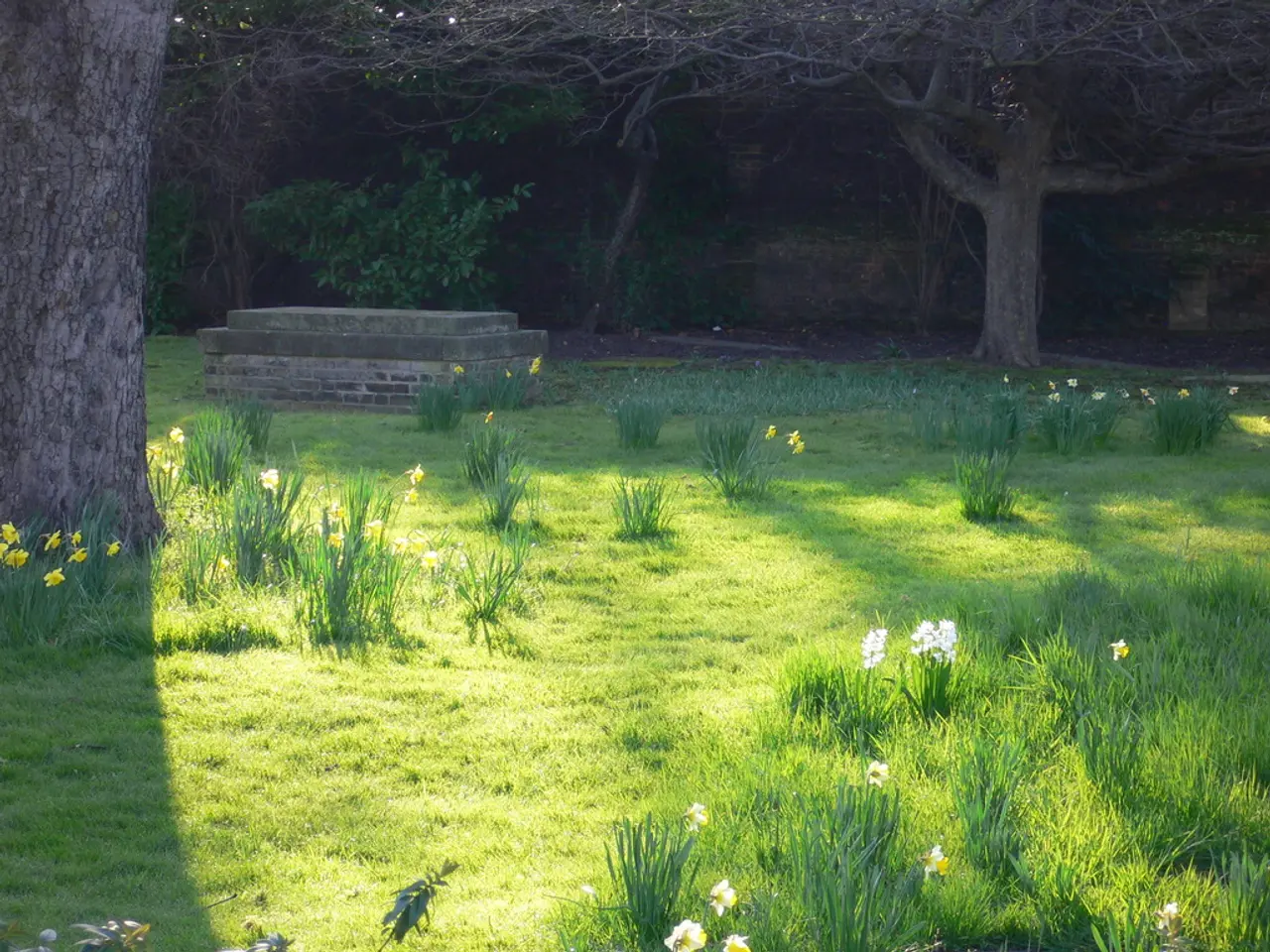Garden tasks for Autumn: Insights from Sissinghurst's Head Gardener on autumnal garden chores
In the gardens of Sissinghurst, the change of season to October brings a shift in the garden, with the symphony of colors from sedums to Euonymus alatus. Autumn is a time of preparation and transition, as gardeners prepare the grounds for the coming seasons and maintain the character of the garden.
Hedge cutting is one of the key tasks in autumn gardening. The hedges are cut carefully to maintain their shape and health, with light trimming being the best approach to keep structure without encouraging too much late growth, which is vulnerable to frost.
Lawn care is another important aspect of autumn gardening. August to early autumn is a good time for lawn maintenance, with mowing, scarifying (to remove moss and thatch), aerating, and feeding to strengthen the grass before winter dormancy. Autumn is also the time for repairing bare patches and overseeding thinning areas.
Yellow rattle, Rhinanthus minor, is being sown to weaken the grass sward and promote wildflowers. The seed is sown thinly and raked in lightly into established grass areas to help reduce grass dominance and encourage wildflower diversity.
Many biennials, such as foxgloves or wallflowers, can be sown or planted in autumn. This allows them to establish roots before winter and flower the following year. Hardy annuals can also be sown in autumn for early blooms next spring, with species suited for cold tolerance being chosen.
Seed collecting and cleaning is a vital task in autumn, with seeds being harvested from mature plants in late summer to early autumn. Seeds should be collected when fully ripe but before they disperse naturally, cleaned by removing chaff and plant debris, and dried before storage in cool, dry conditions.
Flowers are cut for drying during late summer and early autumn, when blooms are at their peak. The flowers are hung upside down in a dry, dark, well-ventilated space to preserve their shape and color.
Bulbs are being added to the Orchard and meadow areas each year, including narcissi, fritillaries, and crocuses. Planting bulbs in meadow grass areas is ideal in autumn, with bulbs being planted at the correct depth and spacing, ideally when the soil is cool but not frozen.
The Rondel, a circular yew hedge in the Rose Garden at Sissinghurst, is part of the living architecture that forms the bones of the garden. The Rondel is cut from both sides before the top, and from the bottom up. A hollow roller with a mesh skin is used to evenly distribute the top dressing and seed mix over the lawn.
Though no direct Sissinghurst-specific autumn guide was found, these techniques reflect traditional and recommended autumn tasks for a mixed garden style combining formal and naturalistic elements, such as those inspired by Sissinghurst’s design ethos. For further specificity on Sissinghurst’s unique approaches, visiting their official resources or gardening collections focusing on their practices might be necessary.
In Sissinghurst, grass seed can be pre-germinated by mixing it with the top dressing a week or so before broadcasting, which ensures the lawn greens up more quickly. No watering is practiced in the borders at Sissinghurst, according to Troy Scott Smith. Biennials are moved into their flowering position in the garden from mid-October to late November.
The garden is experiencing a significant increase in wildflower species due to a plan of meadow enrichment. Seeds are collected monthly from midsummer until the new year, with care taken to judge the right moment of ripeness.
The first frosts of the season will induce senescence, making the soil cold and wet. Bulbs are being added to the Orchard and meadow areas each year, including narcissi, fritillaries, and crocuses. Collected seeds are cleaned and stored for later sowing.
When cutting the top of the hedge, the choice is between cutting level with the land or using a spirit level. Hedge cutting injects a solidity and calmness to the scene, providing an anchor point for the more ephemeral garden elements.
- Autumn gardening involves not only the maintenance of existing plants and lawn, but also the sowing of seeds for wildflowers like yellow rattle and biennials such as foxgloves or wallflowers, ensuring a diverse range of flowers in the home-and-garden lifestyle.
- In addition to traditional hedge cutting methods, innovative techniques like pre-germinating grass seeds and using hollow rollers for top dressing in the Rondel contribute to the unique character of gardens like Sissinghurst, reflecting a mixed garden style blending formal and naturalistic elements.
- As autumn progresses, the time for collecting and cleaning seeds, cutting flowers for drying, and planting bulbs in meadow and grass areas arrives, incorporating these tasks into the shift in lifestyle and focus towards preparing gardens for the coming seasons.




